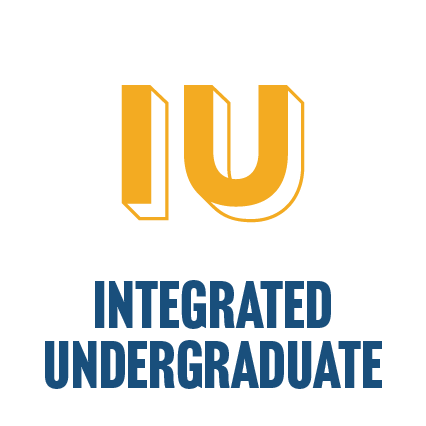Which program pathway will you choose?
To teach in California, you will need to earn a credential by completing a Commission-approved teacher preparation program. There are several pathways to choose from. While each has benefits, certain pathways provide particularly strong clinical practice
(field experience) to prospective teachers. Research indicates that with such practice, new teachers can feel more prepared and supported,1 and they stay in the profession longer.2 Depending on the program you choose, the format may be in-person, virtual, or hybrid, and you may have the option to earn your bachelor's or master's degree along with your Preliminary credential, a professional-level
license valid for five years. Programs may offer distinct opportunities to access financial resources, including the ability to start earning income and serving as the teacher sooner in some cases. Explore the program pathways below to find the one
that's right for you.
Residency
Residency programs are for college graduates and are inspired by the medical school approach to training doctors. They offer post-baccalaureate coursework alongside extended mentoring and student teaching through almost the entire length of the program— and financial support to cover tuition expenses during the program. Candidates in this pathway tend to feel well prepared and supported and stay in the teaching profession. Residencies also tend to attract a diverse pool of teacher candidates.
Traditional
Traditional programs are the most common, well-established pathway. They offer an academic and theoretical focus through post-baccalaureate coursework and integrate student teaching experiences. Candidates in this pathway tend to complete their credentials in a timely way and stay in the profession. This pathway also may offer more choices regarding program location and format.
Integrated Undergraduate
Integrated undergraduate programs offer an accelerated pathway for those who know they want to be teachers prior to graduating college. They allow candidates to complete teacher preparation coursework—focused on the specific subject the candidate wishes to teach—during their undergraduate education. As with a traditional program, student teaching begins close to completion of the program. This pathway requires careful coordination and planning, but it may be more cost-effective than completing an undergraduate degree separately. Candidates in integrated undergraduate programs tend to complete their teacher preparation in a timely way and stay in the teaching profession.
Intern
Intern programs offer the fastest path to a teaching career. Candidates can serve as a teacher of record and earn a salary after completing 120 hours of pre-service requirements—far less than other pathway types require. Candidates in this pathway must balance postgraduate-level coursework and being employed as a first-year teacher at the same time, and also have the opportunity to “try on” a teaching career prior to earning a Preliminary credential. Intern programs also tend to attract a diverse pool of teacher candidates.
Do I need to complete a teacher credentialing program?
I think I qualify for a California teaching credential through some other way.
Currently the only routes to obtain a Single Subject and Multiple Subject teaching credentials in California are by transferring a teaching credential from another state or country, completing a Commission-approved credentialing program, or by having qualifying experience teaching in private schools. Education Specialist Instruction teaching credentials may also be obtained through the same routes with the exception of the private school route, which does not apply to this type of credential. These pathways were created through statute and regulation, and until there are changes in legislation to allow easier or additional options, the Commission does not have the authority to issue credentials through other avenues apart from what currently exists. Even those who have already earned master's or doctorate degrees or completed graduate-level coursework will still need to complete a teacher credentialing program. If you do not have a teaching credential from another state or country or did not teach in private schools, then you will need to complete a California credentialing program in order to earn your California teaching credential. Only California Commission on Teacher Credentialing approved programs lead to a California teaching credential. Once you have chosen a pathway, you can use the dashboard at the bottom of the specific pathway page to find a list of approved programs, or you can visit the Programs Pathways Dashboard or the Approved Institutions and Programs Dashboard.
I’m currently in or I completed a California bachelor’s or graduate degree program in education.
I’m currently in or I completed an out-of-state bachelor’s or graduate degree program in education.
References
- Silva et al (2014). Teaching residency programs: A multisite look at a new model to prepare teachers for high-need schools (NCEE 2015-4002). Washington, DC: Institute of Education Sciences, U.S. Department of Education.; Sloan et al (2018). A Different,
More Durable Model: Hunter College Urban Teacher Residency Project. New Visions for Public Schools.
- Ong et al (2021). CTERIN Policy Brief: Diversifying California's Teaching Force: How Teachers Enter the Classroom, Who They Serve, & If They Stay. California Teacher Education Research & Improvement Network.; Goldhaber et al (2022). Room for improvement? Mentor teachers and the evolution of teacher preservice clinical evaluations, American Educational Research Journal 59(5), pp. 1011-1048.; Papay et al (2012). Does an urban teacher residency increase student achievement? Early evidence from Boston, Educational Evaluation and Policy Analysis 34(4), pp. 413–434.; Sloan et al (2018). A Different, More Durable Model: Hunter College Urban Teacher Residency Project. New Visions for Public Schools.; Valente et al (2023). Establishing partnerships in the Central Valley to expand the teacher residency model, Issues in Teacher Education 32(1), pp. 8-23.
.png?sfvrsn=c28b72b1_10)
.png?sfvrsn=cd8b72b1_0)







